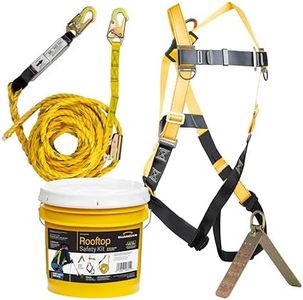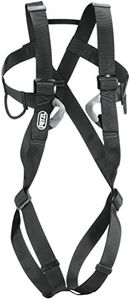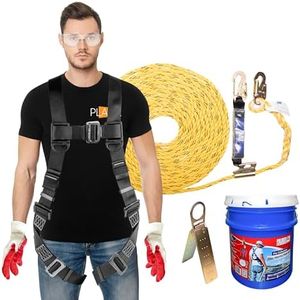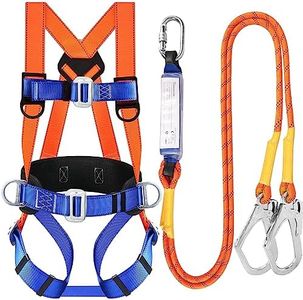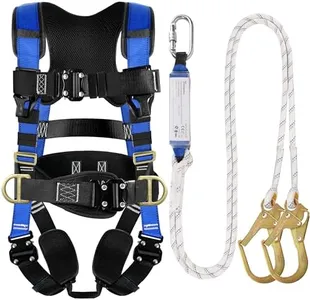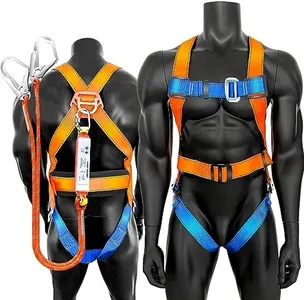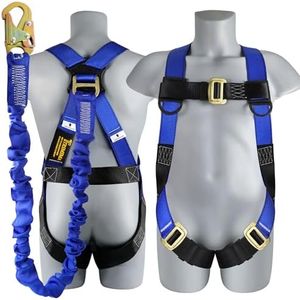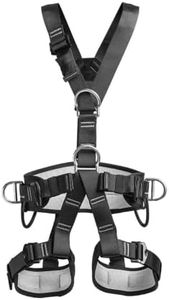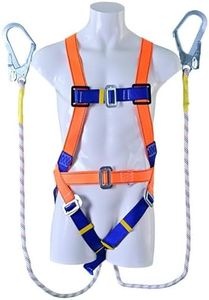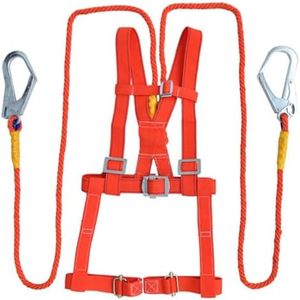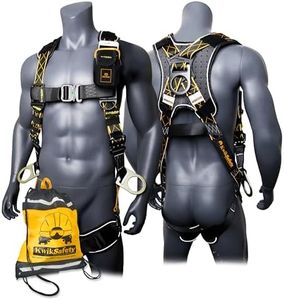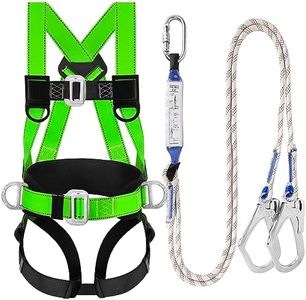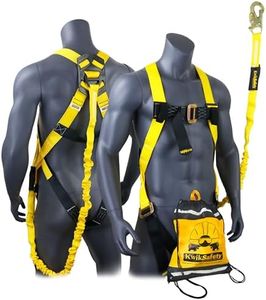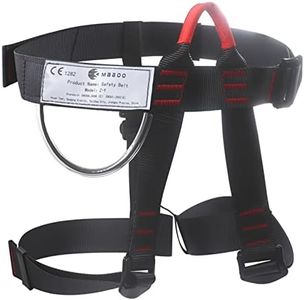We Use CookiesWe use cookies to enhance the security, performance,
functionality and for analytical and promotional activities. By continuing to browse this site you
are agreeing to our privacy policy
10 Best Safety Harnesses
From leading brands and best sellers available on the web.Buying Guide for the Best Safety Harnesses
Choosing the right safety harness is crucial for ensuring personal safety when working at heights or in other risky environments. The right harness not only keeps you secure but also allows for comfort and freedom of movement, which can be essential for productivity and long-term health. To find the best fit for yourself, it's important to consider where and how you'll use the harness, the risks involved, and your own comfort and body type. Focusing on key features will help you balance safety and usability for your specific tasks.Harness TypeThe harness type refers to the harness's overall design and intended use. The most common ones are full-body harnesses, chest harnesses, and seat harnesses. Full-body harnesses provide the highest level of safety and are standard for fall protection. Chest harnesses are lighter and used when only minimal support is needed, while seat harnesses are designed mainly for positioning and comfort. If you need fall protection for construction, roofing, or tower work, a full-body harness is your best choice. For specialized activities like climbing or rescue, seat or chest harnesses may be suitable. Your main risks and the nature of your work should determine which type fits you best.
Attachment Points (D-Rings)Attachment points, usually in the form of metal D-rings, are where you connect lanyards, lifelines, or other safety gear. The placement and number of D-rings matter for different jobs: a dorsal (back) D-ring is standard for most fall arrest situations, while front, side, or shoulder D-rings allow for additional positioning or rescue options. If your job just requires basic fall protection, a single dorsal D-ring may suffice. If you'll be positioning yourself hands-free or might need rescue lifting, multiple D-rings or specialized placements might be needed. Match the attachment points to your specific work requirements.
Adjustability and FitAdjustability refers to the harness's ability to be loosened or tightened for a secure fit. Good fit is critical for comfort and safety—a harness that’s too loose may not prevent injury in a fall, while one that’s too tight can restrict movement or bloodstream. Most harnesses have adjustable straps at the shoulders, chest, waist, and legs. Consider how much adjustability you need: if multiple people use the same harness, or if you wear bulky clothing, you’ll need more adjustment points. Try to ensure the harness can be customized to your body shape for long hours of use without discomfort.
Padding and Comfort FeaturesPadding is added to harnesses in areas where straps bear the most weight or friction, such as the shoulders, back, and legs. This can make a huge difference in comfort, especially for prolonged use. Choose a harness with adequate padding if you spend several hours a day wearing it or performing tasks that require a lot of movement. If your use is short and infrequent, minimal padding may be acceptable and can offer lighter weight.
Weight CapacityWeight capacity refers to the total load (including your body weight, tools, and gear) that the harness is rated to safely support. Standard harnesses often support up to a certain weight, but if you carry heavy equipment or have a larger body frame, you must check that your loaded weight doesn’t exceed the manufacturer’s limits. Pick a harness with a weight capacity that accommodates both your body and added gear to ensure safety at all times.
Certification StandardsCertifications indicate that the harness meets key safety standards set by relevant authorities. Common standards include OSHA, ANSI, or international equivalents, and mean the harness has passed independent testing for strength, durability, and performance. Always check for compliance with the standards accepted in your industry or region. Choosing a certified harness is critical for ensuring you’re protected and may also be a legal requirement for your work.
